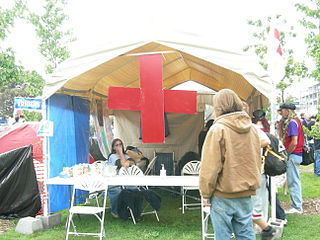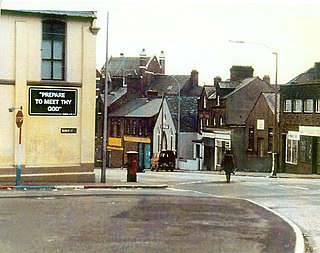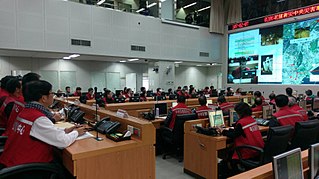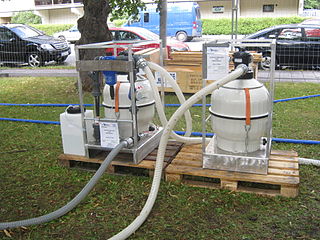 W
WThere are three primary emergency services that can be summoned directly by the public:Police — law enforcement, criminal investigation, and maintenance of public order. There are a variety of law enforcement agencies that conduct law enforcement. In the United States, there are State Police and Highway Patrol agencies, Municipal and County police and Sheriff agencies as well as other law enforcement agencies. Fire and Rescue Services — firefighting, hazardous materials response, EMS response and technical rescue. These services are provided to those who need help during any type of emergency. Sometimes EMS and technical rescue services are separate as seen below. EMS — emergency medical services and technical rescue. Emergency Medical Services agencies and Technical Rescue services agencies are responsible for immediate response to medical emergency calls as well as specialized rescue services calls. Many emergency medical services agencies in the United States operate technical rescue services vehicles and equipment and work to help those who need rescue assistance.
 W
WAn aid station is a temporary facility established to provide supplies to endurance event participants or medical first aid and provisions during major events, disaster response situations, or military operations.
 W
WBomb disposal is an explosives engineering profession using the process by which hazardous explosive devices are rendered safe. Bomb disposal is an all-encompassing term to describe the separate, but interrelated functions in the military fields of explosive ordnance disposal (EOD) and improvised explosive device disposal (IEDD), and the public safety roles of public safety bomb disposal (PSBD) and the bomb squad.
 W
WThe Central Emergency Operation Center is the emergency operations center of Taiwan which is activated in the event of emergency situation. The center is operated by the National Fire Agency of the Ministry of the Interior.
 W
WA diesel generator (DG) is the combination of a diesel engine with an electric generator to generate electrical energy. This is a specific case of engine-generator. A diesel compression-ignition engine is usually designed to run on diesel fuel, but some types are adapted for other liquid fuels or natural gas.
 W
WThe drowning chain is a series of conditions that on their own, or together can lead to a person being drowned. Each link in the chain can lead on to another link, or directly to a drowning or near drowning. The chain is used by lifeguards as a basis for targeting their activity at preventing, rather than reacting to, drowning or other incidents.
 W
WAn emergency operations center (EOC) is a central command and control facility responsible for carrying out the principles of emergency preparedness and emergency management, or disaster management functions at a strategic level during an emergency, and ensuring the continuity of operation of a company, political subdivision or other organization.
 W
WAn emergency shelter is a place for people to live temporarily when they cannot live in their previous residence, similar to homeless shelters. The main difference is that an emergency shelter typically specializes in people fleeing a specific type of situation, such as natural or man-made disasters, domestic violence, or victims of sexual abuse. A more minor difference is that people staying in emergency shelters are more likely to stay all day, except for work, school, or errands, while homeless shelters usually expect people to stay elsewhere during the day, returning only to sleep or eat. Emergency shelters sometimes facilitate support groups, and/or provide meals.
 W
WA field hospital is a temporary hospital or mobile medical unit that takes care of casualties on-site before they can be safely transported to more permanent facilities. This term was initially used in military medicine, but it is inherited to be used in civil situations such as disasters and major incidents.
 W
WFirefighter rehabilitation is a vital firefighting service, providing firefighters and other emergency personnel with immediate medical attention including rehydration, treatment for smoke inhalation, and the prevention of life-threatening conditions such as heatstroke and heart attack after working at the scene of an incident. Firefighter rehabilitation can include a variety of things from a simple check up to deciding whether or not the firefighter needs to see a doctor. The rehabilitation area is set up in a safe location near the incident so that it can be accessible to any emergency responders who may need it.
 W
WFirefighting is the act of attempting to prevent the spread of and extinguish significant unwanted fires in buildings, vehicles, and woodlands. A firefighter suppresses fires to protect lives, property and the environment.
 W
WThe French Civil Protection, or the FNPC, is a French humanitarian and first aid voluntary association.
 W
WThe FSS Code or International Code for Fire Safety Systems is a set of international treaties organised by the International Maritime Organization under the SOLAS Convention that are designed to reduce the risk of fire, and aid in emergency response aboard ships. Some of the components of the code were constructed after some high-profile passenger ship disasters over the last century.
 W
WA lifeguard is a rescuer who supervises the safety and rescue of swimmers, surfers, and other water sports participants such as in a swimming pool, water park, beach, spa, river and lake. Lifeguards are trained in swimming and CPR/AED first aid, certified in water rescue using a variety of aids and equipment depending on requirements of their particular venue. In some areas, lifeguards are part of the emergency services system to incidents and in some communities, lifeguards may function as the primary EMS provider.
 W
WThe Pittsburgh Bureau of EMS (PEMS) provides emergency medical services and medically directed rescue services for the City of Pittsburgh, Pennsylvania. It is a bureau of the Department of Public Safety (DPS), along with the Pittsburgh Bureau of Police, Administration, Fire, and Animal Care and Control. The DPS is responsible for 55.5 square miles (144 km2) with a population of 305,841 as of the 2013 Census estimation. The Bureau was founded in 1975 by then current city administration, absorbing Freedom House Ambulance. The Bureau of Emergency Medical Services was also the first EMS agency in the United States. Pittsburgh, in addition to being the birthplace of prehospital care, is one of few cities in the United States where "medically directed rescue" is practiced.
 W
WPortable water purification devices are self-contained, easily transported units used to purify water from untreated sources for drinking purposes. Their main function is to eliminate pathogens, and often also of suspended solids and some unpalatable or toxic compounds.
 W
WPublic security is the function of governments which ensures the protection of citizens, persons in their territory, organizations, and institutions against threats to their well-being – and to the prosperity of their communities.
 W
WRefugee shelters are structures ranging from the most temporary tent accommodation through transitional shelter to building temporary pics and settlements and include the most basic kind of ad hoc structure. They are created in the aftermath of a conflict or natural disaster as a temporary residence for victims who have lost or abandoned their homes. Refugees and IDPs are people fleeing their homes or countries of origin due to natural disasters, war and political or religious persecution in search of refuge and resettlement. Living in these shelters refugees may force marriage crowded, noisy, dirty, disease filled grounds where thousands of families are cramped together and surviving day by day.
 W
WSAMUR is a specialized emergency system of Madrid, Spain. It is composed of the central base, 17 operative bases and 190 vehicles.
 W
WTechnician Specialist in Deactivation of Explosive Artifacts commonly known by its abbreviation TEDAX, TEDAX are the Spanish organization that organizes the personnel trained in bomb disposal.
 W
WTransitional shelter is any of a range of shelter options that help people affected by conflict or natural disasters who have lost or abandoned their housing until they can return to or recover acceptable permanent accommodation. The term refers to an incremental process rather than a product, in which a shelter can be:upgraded into part of a permanent house; reused for another purpose; relocated from a temporary site to a permanent location; resold, to generate income to aid with recovery; and recycled for reconstruction.
 W
WUnderwater search and recovery is the process of locating and recovering underwater objects, often by divers, but also by the use of submersibles, remotely operated vehicles and electronic equipment on surface vessels.
 W
WA warming center is a short-term emergency shelter that operates when temperatures or a combination of precipitation, wind chill, wind and temperature become dangerously inclement. Their paramount purpose is the prevention of death and injury from exposure to the elements. This may include acute trauma from falling objects such as trees, or injury to extremities due to frostbite. A more prevalent emergency which warming centers seek to prevent is hypothermia, the risk for which is aggravated by factors such as age, alcohol consumption, and homelessness.
 W
WThe Wheelbarrow is a remotely controlled robot designed in 1972 for use by British Army bomb disposal teams operating in Northern Ireland, mainland Britain and Iraq. Over 400 have been destroyed in operation, and they are considered to have saved the lives of hundreds.